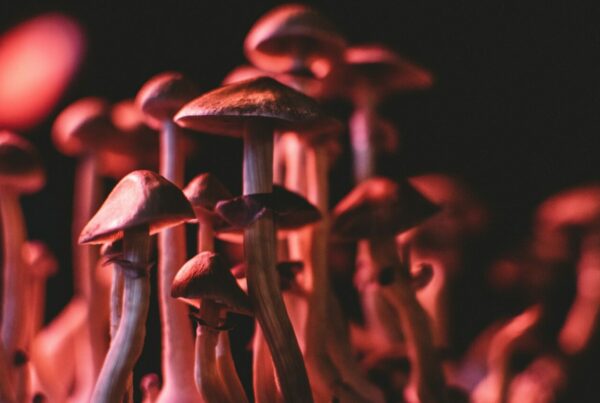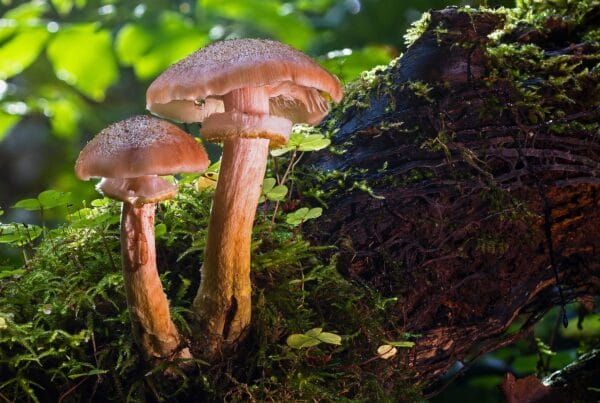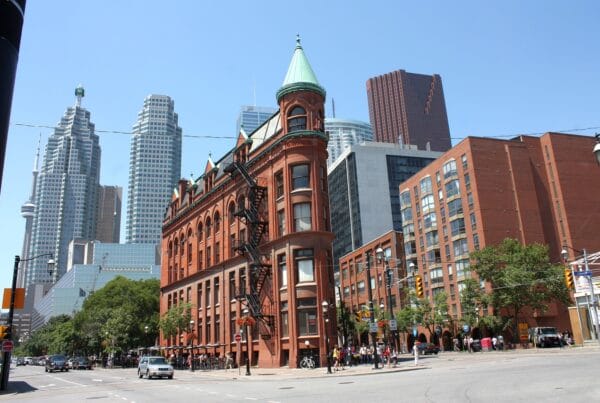Traditional anxiety treatments typically involve medication and therapy. However, these methods may not be successful for everyone due to potential side effects. This has led to a growing interest in alternative solutions such as psychedelic therapy, which employs substances like “magic mushrooms Montreal” and others.
Welcome to your prime destination to buy psychedelics online in Canada. We provide quick, secure, and confidential services.
[toc]Key Points:
- Psychedelic therapy combines the therapeutic effects of psychedelic substances with traditional talk therapy to aid the healing process.
- Psychedelic therapy can improve emotional health and overall life satisfaction through spiritual journeys.
- The process of integration is a vital method in psychedelic therapy that aims to ensure the long-term effectiveness of the therapy session.

Anxiety Disorder Statistics in Canada
According to the 2022 Mental Health and Access to Care Survey, Canada has seen a concerning increase in the prevalence of anxiety disorders. The percentage of Canadians aged 15 and older diagnosed with generalized anxiety disorder in the year before the survey has risen from 2.6% in 2012 to 5.2% in 2022.
Contrasting Traditional Treatment and Psychedelic Therapy
Common treatments for anxiety disorders typically consist of a combination of psychotherapy and medication. Psychotherapy, also known as psychological counselling, is a collaborative process between a therapist and the patient to mitigate anxiety symptoms.
On the other hand, anxiety medications reduce symptoms by tailoring treatment to the specific type of anxiety disorder and considering any concurrent mental or physical health issues. While treatments may differ based on individual situations, psychotherapy and medication form the cornerstone.
In psychedelic therapy, sessions are unique as they include one or two doses of a psychedelic substance, along with other therapeutic
Methods:
The Role of Psychedelics in Therapy
Psychedelic therapy is a therapeutic technique that capitalizes on the advantages of psychedelic substances to enhance the healing process. These substances, well-known for their hallucinogenic properties, have been pivotal in holistic medicine and spiritual rituals across diverse cultures for millennia.
The two substances most frequently used in this type of therapeutic approach are Lysergic acid diethylamide (LSD) and psilocybin. LSD triggers alterations in mood, cognition, and consciousness. Psilocybin, according to the Health Canada website, is the active ingredient in magic mushrooms. Consumption of these mushrooms can provoke sensory experiences, such as visual, auditory, or tactile hallucinations.
Determining Dosage Over Multiple Sessions
In the course of psychedelic therapy, professionals assess patients to determine the appropriate psilocybin dosage for their therapeutic journey. Dosages differ from patient to patient, with some beginning at moderate levels, and others able to handle larger amounts of the substance. The treatment plan usually comprises one to three medication sessions, each lasting six to eight hours and spaced several weeks apart. This methodology differs from traditional medications that require daily intake until further recommendations given by a healthcare provider.
Experiencing Spiritual and Transformative Encounters
Conventional anxiety medications do not produce transformative visions or feelings of divine interaction. Their function is to control symptoms, while therapy aims to tackle the root causes of the condition. Psychedelic therapy can profoundly affect emotional wellbeing and overall life quality.
The immersive experiences often result in deep introspection, heightened self-awareness, and improved emotional processing. These benefits can stimulate personal development, inspire positive changes in behavior, and enhance overall mental health.
Impact
| Elevated Consciousness | Altered consciousness states provide a new worldview. | These enhanced perceptions commonly result in:Deep revelationsEpiphaniesIncreased understanding of self and surroundings |
| Emotional Healing | Assists emotional healing by offering the chance to face and process unresolved trauma, grief, or emotional discomfort. | This process helps in:Unearthing deeply suppressed emotionsReleasing emotional impedimentsPromoting emotional wellness |
| Heightened Self-Awareness | Enhances connectivity among sensory brain areas while reducing connectivity within the default mode network. This network integrates brain areas that are interconnected, managing self-focused cognition and one’s personal perception.” | These areas function to: Modify negative thinking patterns, beliefs, and habitual behaviours. Empower users to gain profound insights about their authentic selves, motivating factors, and interpersonal interactions. |
Somatic Therapy
Somatic therapy, though not traditionally related to psychedelic therapy, is attracting interest for its potential benefits. This technique, centered around the body, explores the connection between the mind and body. It’s based on the principle that past traumas can cause sensations to be trapped in the body. Somatic therapists help individuals identify these body sensations and use therapeutic techniques to alleviate this tension.
Integration
This facilitates a space for clients to attain clarity, acquire perspective, and cultivate wisdom from their psychedelic experiences. The transformative process occurs during integration sessions with the therapist and through the client’s proactive steps outside of psychedelic journeys. Integration enhances the transformative effects of psychedelics by actively engaging with surfaced insights and emotional revelations.
Types of Integration
- Journaling. By documenting experiences, individuals can solidify memories for easier future recollection. It also enables clients to examine their experiences from various perspectives to reveal different interpretations, implications, and connections.
- Art. This provides an effective way to capture a psychedelic journey’s complex feelings and emotions in a creative and visually expressive form.
- Practicing Nature-based Approaches. These can be as simple as taking mindful walks in the forest or finding peace near a calming body of water. Therapists can support clients in recognizing the intricate patterns within nature or suggest using natural elements like plants, stones, water, and candles as grounding tools.
- Engaging in Integration Groups. Group sessions with individuals having comparable experiences offer a significant opportunity for reflection, support, and connection. The capacity of psychedelic therapy to spark a sense of interdependence and mutual understanding beyond personal boundaries is at its heart.
The Role of These Techniques in Anxiety Treatment
The primary pharmacological idea behind all psychedelics is their ability to act as agonists, or activators, of serotonin (5-HT) 2A
Psychedelic therapy involves the use of compounds like psilocybin, which are known to initiate a significant shift in brain activity. Specifically, these substances stimulate a unique receptor in the brain. The research into psychedelics often emphasizes their influence on the brain’s default mode network, a system connected with repetitive thoughts. This network is also known to have associations with conditions such as depression and anxiety disorders. Through this treatment, patients can experience a significant reduction in anxiety, with the effects lasting for as long as 12 months following treatment.
After a session involving psilocybin, which typically includes intense spiritual experiences, the patient participates in a conversation with their therapist. These dialogue-based sessions involve healthcare professionals who are trained to listen attentively to the patient. They apply specific strategies and techniques designed to enhance the positive outcomes of the treatment.
The combination of these techniques can assist those suffering from anxiety by providing sustainable relief in fewer sessions than traditional treatments.
Unleash Transformation, One Session at a Time
Many people rely on traditional anxiety treatments, but not all find these methods effective or satisfying. Psychedelic therapy provides an alternative approach, employing innovative techniques that can create transformative experiences. These methods work together to yield profound, long-lasting improvements—sometimes seen up to a year after just one to three sessions.
In addition to improving mental health, this therapy could also result in significant cost savings for patients. Ready to discover a new path to wellbeing? Explore the promise of psychedelic therapy with Magic Mushrooms Ottawa Canada.
Commonly Asked Questions
Is a specific type of magic mushroom used in psychedelic therapy?
Often, in studies related to psychedelic-assisted therapy, the type of mushroom used is not explicitly stated. Typically, Psilocybe cubensis is the mushroom of choice.
Online magic mushroom dispensaries provide a range of strains to cater to different preferences. You have the freedom to choose any strain to experience the therapeutic benefits of psychedelics. However, it’s important to exercise caution and choose a reliable seller to avoid obtaining unsafe magic mushrooms from dishonest sources.
What is the duration of psychedelic therapy?
The length of psychedelic therapy can vary as it involves several stages. A session in which the psychedelic is taken lasts between 4 to 8 hours. The entire therapeutic process, which includes preparation, the session itself, and post-session discussions, can span from a few weeks to several months.
As for the long-term effects, individuals have reported improvements in their mental health for several months, and in some cases, even up to a The transformation can occur within a year or even after just a few sessions.
Several sessions are provided.
Does the therapist assist the patient during their spiritual journey?
In this stage, experts such as therapists or other team members might guide the patient. Studies suggest that Spiritual Health Practitioners (SHPs) offer distinctive and precious contributions to boost participants’ health and support their advancement on a spiritual journey. Some people seek the help of an SHP, while others rely on the therapist or specialist available.
Does the “set and setting” play a role in the progression of psychedelic therapy?
Certainly, both the individual’s mindset (set) and the physical surroundings (setting) are vital to safely guiding spiritual experiences during a psychedelic therapy session. The individual’s psychological state molds their spiritual journey, influencing the experience before and throughout the psychedelic session. Factors such as beliefs, expectations, emotional states, and intentions determine the course and intensity of the experience.
Primary Reference: Psychedelics as Emerging Treatments for Anxiety Disorders: Opportunities and Challenges in a Budding Field – PMC (nih.gov)
About the Authors:
Franklin King, IV, MD. and Rebecca Hammond, M.D.
Related Articles:





